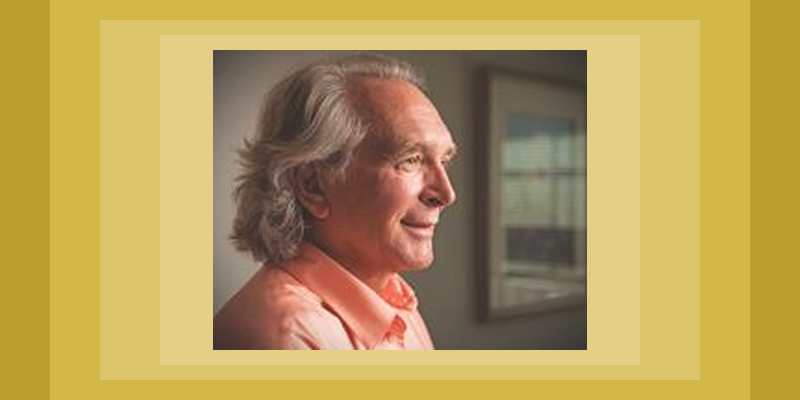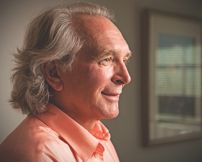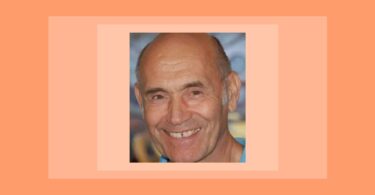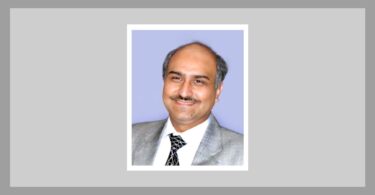Dr. Peter Prociuk received his medical degree from the University of Saskatchewan, Canada in 1981. His internship and residency in internal medicine were completed in 1985 in Philadelphia, PA when he became board certified in internal medicine. He transitioned to aclassical homeopathic practice in 1992 and now practices in West Chester, PA. Dr. Prociuk has had success in treating hundreds of children with Autism Spectrum Disorder. www.drpeterprociuk.com
Dr. Peter Prociuk
AS: In 1992 you transitioned to homeopathy. What inspired that change in your practice?
PP: The limitations of conventional medicine started to become apparent soon after beginning medical school. This awareness intensified through post graduate training and by 1992, 7 years after finishing a residency in internal medicine,reached a breaking point. The realities of practice, whether in a clinic, hospital ward, the intensive care unit or emergency department conflicted very intensely with my ideals. It was clear the emphasis of conventional medicine was about managing disease with pharmaceuticals and not about empowering patients with the means to achieve a better level of health. I was ready to quit medicine entirely.
I had been briefly exposed to homeopathy in England during a summer vacation in 1978 and again in 1988 when my wife at the time saw Dr Henry Williams. He had been in practice for decades in Lancaster, PA and had a legendary reputation as a homeopath and healer in that area. In both cases, it was striking how time was spent in asking detailed questions about things other than the primary complaint and that the prescription was based on a much bigger picture than what I was trained to consider. It was equally striking how effective the treatment was, considering the seemingly imprecise amount of ‘sugar pills’ given. I was intrigued and knew there was something significant in this different kind of medicine but had no understanding at all.
Right around the time I was down in the dumps thinking about careers other than medicine, an unexpected call came from Dr Williams who said he had to retire because of his wife’s health and wanted to know if I would like to take over his practice. Our last interaction had been about 3 years prior and I wasn’t even thinking about homeopathy. Long story short, I recognized this was more than a coincidence and made the decision to take up his offer without considering any of the practical details. For the record, I wouldn’t advise this approach to anyone unless you’re up for some major but deeply rewarding challenges.
AS: It seems like the stars were lined up just right and you were meant to do this. Taking over Henry Williams practice is a propitious way to start, but how challenging was that?
PP:The offer came in February, 1992. The one practicality I did keep in mind was that I didn’t know anything about homeopathy and needed to learn a lot. Henry said he wasn’t going to teach me homeopathy, a wise decision, but I could mentor with him anytime in his offices in Lancaster and New Holland. We decided I would officially start in January, 1993 and in the meantime I would start studying my rear end off. I started off reading Vithoulkas, Kent and the Organon and took cases as they came my way. These were by and large successful which gave me a lot of encouragement.
The most impactful of these cases was the son of one of the unit clerks in the emergency ward where I was working at the time. He was 2 and from very early infancy had a continuous succession of ear infections. He had tubes inserted 5 times because they were falling out all the time and by the time I saw him he was on a daily suppressive dose of antibiotics. The only thing this drastic measure did was suppress his otherwise constant fever. His ears drained pus continuously, he couldn’t hear much and was totally stuck to his mother, such that any separation caused him to vomit profusely. I knew this was complicated but of course had no idea how complicated it was from a homeopathic standpoint. It took 3 hours to take the case and another 3 days of study before I was ready to prescribe. Being an ignorant beginner without any real understanding of how powerful remedies can be, I chose Calcarea carbonica 10M. However, I knew enough to be very anxious about what could happen.
Two days later at the end of my shift in the ER the mother called. My heart was in my feet and I was cursing myself for embarking on this out of the box life decision. “I don’t know what you did but I want you to know that my son is totally different!” Her voice was happy and excited, my heart went back up into my chest and my decision to pursue homeopathy seemed right once again. She went on to say that his ears stopped draining almost immediately, he slept alone for the first time in his life, he was currently playing by himself in the family room and that he looked up when a small plane flew by because he could hear the engine. He went on to heal completely.
In retrospect I am amazed that the remedy worked so beautifully. Calcarea sulphurica was probably a better choice and in spite of the long standing, powerfully suppressive treatments, he recovered amazingly easily from such a high potency. Sometimes God protects and blesses the ignorant. This experience was a real watershed in that my decision to pursue homeopathy as a career became cemented solidly. I had never experienced anything remotely as satisfying in my conventional experience.
That fall I started a professional course with the International Foundation for Homeopathy with Janet Levatin, Richard Moskowitz, Ted Chapman, George Guess and others, all experienced, knowledgeable classical homeopaths. The following year I took Paul Herscu’s course in Connecticut and along the way, until now, I read constantly, went to seminars whenever possible and learned a lot from my mistakes.
The adjustments on every front were very challenging in this transition. Instead of feeling more or less comfortable with whatever came my way clinically, each patient was a brand new, individual challenge that required a lot of careful attention to small individual details. The nuances in perceiving the patient accurately, ie recognizing the living remedy that was manifest with each patient was enormously challenging at the beginning. People were paying out of pocket, entrusting me with their health and I had to make a living, which for the first time wasn’t a given. Looking back, I don’t think I would have done this if I had known in advance what it was going to take to make the transition. Not considering those practical details at the very beginning was also fortuitous.
AS: Looking back from then to now, what have been some of your most important lessons? What does your approach look like nowadays?
PP: An early milestone was the result of a Rajan Sankaran seminar I attended in the mid 90’s. Up to that point my approach in taking a case was linear, for lack of a better word. The case was taken in an orderly fashion, taking note of important symptoms which were subsequently pursued methodically until enough information was available to start repertorizing. It was working fairly well with a presentable percentage of successful prescriptions being made. I wasn’t advertising and there was enough success for my patients to spontaneously refer their friends and family in spite of paying out of pocket, a reasonable benchmark for assessing success in this business.
The take home message from the Sankaran event was that remedies had to be seen as living energies, manifesting with individual nuances in individual patients and that the totality of symptoms was a simultaneous occurrence happening in real time. In the context of his idea of a ‘central delusion’ this living totality originated from a primary or central wound around which the unbalanced emotional posture (delusion) formed. The challenge was to see it in real time as it was unfolding in the exam room. The realization of how far apart this kind of perception and my plodding approach were put me in a temporary state of despair.
At the time I was working with a 35 year old lady who was suffering from severe menstrual cramps since menarche. Nothing, including pregnancy and multiple remedies given by experienced practitioners had changed her symptoms at all. I had prescribed 2 or 3 times without success as well. Fortunately she was a true devotee of homeopathy and would patiently answer every question honestly and thoroughly. Upon returning from the seminar I called and asked her to return to retake the entire case without a charge. Something was being missed by all concerned and I was determined to apply the new approach as best I could.
At one point during the session, quite unexpectedly, Sankaran’s description of this different kind of perception actually happened. I don’t know how the shift occurred but all of a sudden I saw her talking about herself in exactly that way. The delusion of being friendless, characteristic of magnesium muriaticum revealed itself in how she described all her activities, her interpersonal efforts and even her menstrual cramps, which resulted in her being curled up in bed alone for 2 days. The nature of the cramps, the menstrual discharge, the sensitivity to sound and aggravation from anything dairy fit right in. With a kind of certainty never before experienced I gave her Magnesium muriaticum 200C. The next month her menses came and went without cramping and never since recurred.
Now, this was a one of a kind experience with respect to the degree of clarity and intensity with which it happened and it was a watershed. From that time my approach has been constantly shifting from thinking in straight lines to perceiving living patterns. It’s a neverending work in progress, some days better than others, but over the last 20+ years has resulted in a major evolution in my approach. Homeopathy is truly a great teacher!
Another great benefit of practicing homeopathy is that you are constantly confronted with your own shortcomings. We are all mirrors of each other to some degree and every case will contain elements of yourself. As you help others resolve their problems, you learn to better resolve your own. You can’t fix what you’re unaware of and homeopathy is like a giant, reliable mirror which will transform a diligent practitioner in their own life step by step.
There has been one discovery regarding a remedy that started in 1993 and is still an ongoing, open ended project. In 1992 I was told about the resin of a tree native to the Arabian penninsula that was used for treating paralysis in ancient times. The gentleman who described this was a sufi master well immersed in mysticism and long forgotten oral traditions of all kinds. His reputation was impeccable as one always very truthful and this was certainly my experience of him. He also said that this resin had to be obtained from a particular part of Saudi Arabia for reasons not elaborated. Long story short, I was determined to get some and find out what I could about this supposedly almost magic resin, so I went and with some difficulty managed to get a little in early 1993.
I brought it to Jack Borneman and it was potentized by Standard Homeopathics in 6C, 12C, 30C and 200C liquid dilutions for my personal professional use. I still have sealed, unopened 1 oz dropper bottles with 87% EtOH in those potencies but none of the origin resin. Shortly thereafter, the mentor who told me about this resin passed on and I was left without any guidance. It gradually slipped out of my mind for almost 20 years.
One morning about 5 years ago my wife woke up with a brachial palsy from sleeping in the wrong position. Her left arm was completely limp and numb and remained so 45 minutes later in spite of vigorous massage. I was freaking out thinking about what remedies to give and imagining all the worst scenarios. While rummaging through my night stand looking for remedies, a vial of this resin- derived remedy rolled from the very back part of the drawer to the front, making a loud clunk upon impact. This was there for a very long time without my awareness. Remembering that it was used for paralysis, I dosed my wife (30C #10 pellets) and within 45 seconds she was waving her left arm around vigorously exclaiming how much energy had just surged into her arm. It was quite stunning.
Two days later my teenage daughter got concussed quite severely in a track and field event. After Arnica, Natrum sulphuricum, Hypericum and Stramonium, her state was more or less unchanged. She couldn’t exert herself mentally at all, was very photophobic and alternated between depression and intense anger. A chiropractic adjustment helped minimally. Over three weeks after the incident she was still very compromised.
This whole time I was thinking about the effect this remedy had on my wife’s brachial palsy. Somehow the clotted microcirculation to the nerves causing the paralysis opened up very abruptly. A mild traumatic brain injury also involves compromised microcirculation to sensitive nerve tissue. Thinking that this physiologic abnormality was common to both syndromes, I gave her a dose of 200C, and within 2 days her symptoms were almost completely resolved. This also had a big impact.
Since then, I’ve used it about 30 times for treatment of TBI when traditional remedies have failed to work, each time with significant success. Symptoms were either noticeably reduced or resolved in most cases. It’s also been used successfully in other scenarios:
- An elderly male with a retinal infarct and loss of the inferior visual field on the affected side took a single dose of 200C with resolution of the visual field deficit.
- A newborn lamb was found in a pasture in Texas with paralyzed hind extremities. No injury was discovered by the vet and the paralysis was attributed to hypothermia and exposure. The lamb was able to walk unsteadily after several doses of 200C.
- One patient with Electromagnetic Hypersensitivity Syndrome found that taking a dose of 200C after significantly increased exposure to radio frequency (a party in which there was a large smart TV) promptly mitigated her headache and mental confusion. There is some evidence that EHS involves congested lymphatics in the brain.
- One very sensitive lady took a dose for TBI symptoms and got a proving which manifested as cold air induced asthma which she had never had before. The remedy cleared up her headache and mental symptoms which had been present for over a year, even though she had competent, ongoing homeopathic treatment from an experienced practitioner.
- Arguably, all these clinical scenarios have at their root compromised microcirculation to nerve tissue which this remedy seems to act on curatively.
In researching this resin online, there was no information at all about its use in neurological conditions which surprised me. I was told initially that this was an oral tradition which appears to be very much the case. Hopefully the means and facility will open up to pursue these observations more formally.
AS:Those are results that would amaze anyone but the most closed skeptics.The drug companies are pushing more mandatory vaccines while the autism rate has skyrocketed to1in every 65 children. What methods do you employ in those vaccine damaged cases?
PP :It’s not only autism that concerns me. The incidence of chronic illness has increased alarmingly in children over the last 25-30 years.The most pressing issue with vaccines is the question of safety. The mantra that they are safe and effective is sounding hollow for a growing number of people based on their own experience. There is still no formal study of the long term safety of the current childhood vaccination schedule as a whole, in spite of the fact that it is mandatory. There is no formal recognition that vaccine injury is a spectrum of symptoms that can be very individual, insidious and long term. There is no formal study of the risk factors that predispose to this kind of injury and no recognition that susceptibility to injury is individual. These are glaring and inexcusable omissions for a policy in which that same schedule is applied to entire populations. ‘One size fits all’ without the fullest regard to these fundamental safety concerns is bad science to say the least.
My best advice to parents is to consider vaccination a significant medical intervention that warrants careful research before making any decision. No parent would agree to a major surgical procedure that hadn’t been studied carefully, objectively with respect to risks and benefits. Vaccination is made out to be very safe and highly effective but a more careful investigation shows that both claims fall short of their mark.For example, a study was published in April, 2017 from State University in Jackson, MS comparing long term health of vaccinated and unvaccinated children (Mawson et al, Pilot comparative study on the health of vaccinated and unvaccinated 6-12 year old US children, Journal of Translational Science, 2017; 3(3): 1-12). Not surprisingly, this received very little attention in the media although the findings were very significant. Vaccinated children had a significantly higher incidence of allergic rhinitis (30X), other allergies (3.9X), ADHD (4.2X), ASD (4.2X), eczema (2.9X), learning disability (5.2X), neurodevelopmental disorders (3.7X), any chronic conditions (2.4X). The unvaccinated group had a higher incidence of chicken pox (25.3% vs 7.9%), pertussis (8.4% vs 2.5%), rubella (1.9% vs 0.3%) but fewer cases of otitis media (5.8% vs 19.8%) and pneumonia (1.2% vs 6.4%). In exchange for a higher incidence of acute viral conditions in which there were no complications the unvaccinated children enjoyed a much lower incidence of serious chronic illnesses.
Obviously these results warrant careful consideration and much more rigorous scientific study. At the very least parents are advised to approach the issue of vaccination with a more skeptical and cautious perspective, pending studies that clarify the many questions arising from this study.
In real life practice clinicians are seeing a terrifying increase in chronically ill children over the last 25 years, substantiating the findings in this important study. By history, the onset of these conditions follows vaccination in many instances but unfortunately the voices of many mothers have been ignored.Treating these illnesses can be a long, complicated process involving multiple modalities and often can’t be completely resolved. It is a deeply frustrating and tragic situation that mandates a more impartial perspective and much more study from the medical/scientific community regarding vaccination.
AS: I’ve enjoyed this immensely and I know our readers will also. Thank you for sharing!






Wonderful interview projecting the strength,safety and efficacy of homeopathic drugs in the hands of an awakened practitioner.